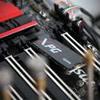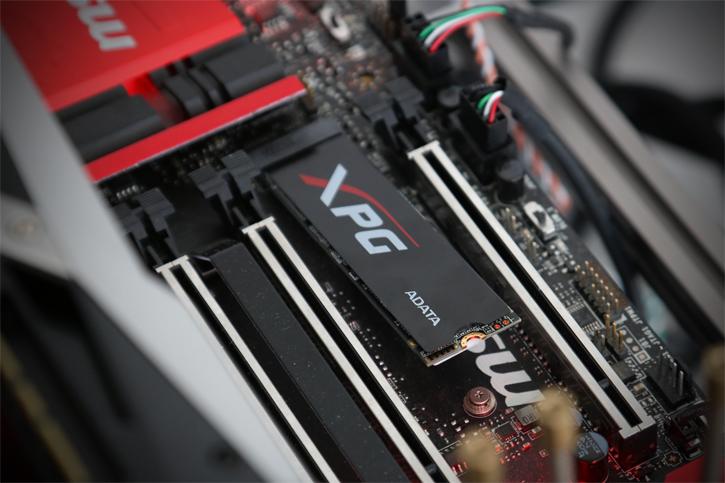Specifications & Features
Specifications & Features
ADATA has released these M.2 SSDs with five products, available in 128, 256, 512GB and 1 adn 2 TB versions. With NVMe 1.2 support the series significantly reduces access latency to provide faster data transmission speeds. Combined with the PCIe Gen 3 x4 interface, the M2 unit can provide breakthrough performances. The SSDs boast sequential read speeds up to 2,500 MB/s regardless of capacity, and sequential writes of up to 1,100 MB/s. When it comes to random I/O, they can do do 140K read IOPS. Random write figures are 150K IOPS.
So What Is V-NAND?
V-NAND is physical vertical NAND cell stacking not to be confused with chip stacking in a multi-chip package. In V-NAND, NAND layers, not chips, are stacked in a single IC. The good news is continued cost reduction, smaller die sizes and more capacity per NAND chip. Also, installed NAND toolsets in the wafer fabs can, for the most part, be reused, thereby extending the useful life of fab equipment. Current V-NAND stacks have 32 and even 48 cell layers vertically over one another, rather than decreasing cell dimensions to fit onto a fixed horizontal space, resulting in higher density and better performance with a smaller footprint. 64 layer (BICS) actually is going into production this year as well. With the M.2 form factor SSDs, more consumers with desktops or ultra-thin PCs can benefit from best-in-class performance and reliability of the technology.
So What Is NVMe?
NVMe is also known as Non-Volatile Memory Express or the Non-Volatile Memory Host Controller Interface Specification. The idea behind NVMe is to improve the storage stack by optimizing the way an application accesses a Flash device. NVMe cuts corners by removing components within the I/O path like that good old fashioned RAID controller. To be able to make use of the new NVMe based devices inside your PC you have to have a proper driver installed, Windows 7, 8 and 10 have this NVMe protocol driver embedded. This enables NVMe
Specifications:
- Sequential Read: up to 2,500 MB/s (CDM)
- Sequential Write: up to 1,100 MB/s (CDM)
- Max 4K Random Read Speed: up to 140,000 IOPS @ QD32
- Max 4K Random Write Speed: up to 150,000 IOPS @ QD32
- Endurance: 320TB
- MTBF: 2 Million Hours Warranty:
- 5-Year Limited Warranty SMART TRIM Garbage Collection



